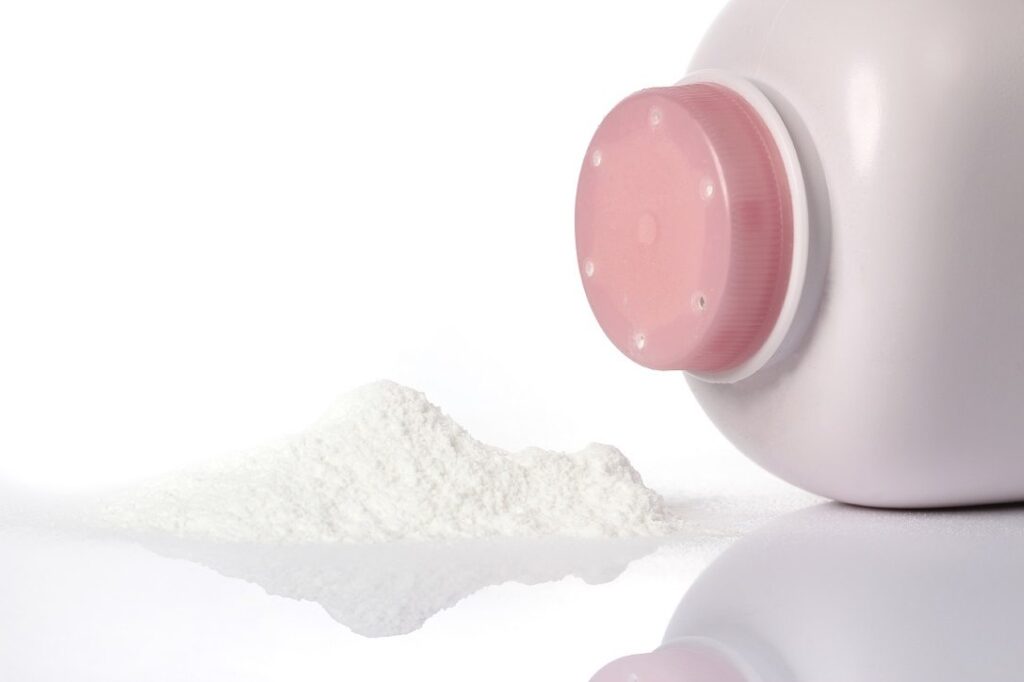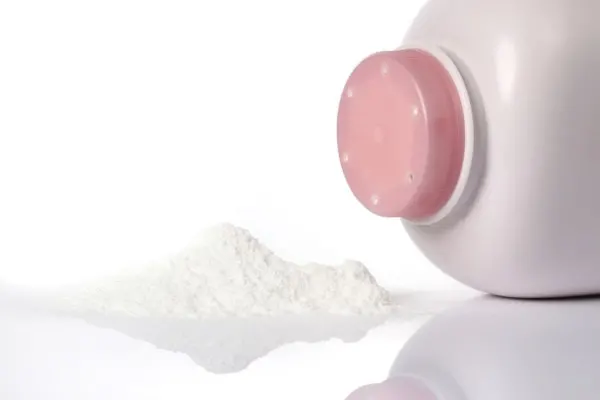Mesothelioma is typically associated with industrial job sites and heavy asbestos exposure, not with a container of baby powder sitting on a bathroom shelf. But growing evidence suggests that talc-based products may have exposed everyday consumers to asbestos, putting them at risk for this rare and aggressive cancer.
If you’ve been diagnosed with mesothelioma and never worked in construction, shipyards, or factories, it’s natural to wonder: Where did the exposure come from?
In recent years, thousands of lawsuits have alleged that cosmetic talc products, including John & Johnson’s Baby Powder, were contaminated with trace amounts of asbestos. These lawsuits argue that long-term use of talc powder may have caused or contributed to mesothelioma, especially in individuals with no occupational asbestos exposure.
In this blog, we’ll explain how talc and asbestos are connected, outline the symptoms and risks of mesothelioma, and walk through what Ohio residents need to know about filing a legal claim.
How Can Talc Powder Cause Mesothelioma?
Talc and asbestos are both naturally occurring minerals that often form near each other in the earth. During the mining process, talc can become contaminated with asbestos fibers — and unless the talc is thoroughly tested and purified, those microscopic fibers may end up in consumer products.
That includes cosmetic powders like Johnson & Johnson’s Baby Powder, which were marketed for daily use and applied liberally to the body. When powder is applied to the body or clothing, it releases tiny asbestos fibers into the air, which are then inhaled and lodged into the lining of the lungs or abdomen. Over time, those fibers can cause chronic inflammation and cell mutations, which, in some cases, may lead to mesothelioma.
While mesothelioma is rare, it is almost exclusively linked to asbestos exposure. For individuals who never worked in construction, manufacturing, or military settings, cosmetic talc may be one of the few plausible sources of exposure.
Could You Have a Legal Claim for Talc-Related Mesothelioma?
If you’ve been diagnosed with mesothelioma, you may be eligible to file a claim against the manufacturers of talc-based products that could have contributed to your illness.
Cosmetic talc lawsuits argue that companies like Johnson & Johnson did not properly test for asbestos contamination or warn consumers about the risks. As a result, you may have a viable case if:
- You used talc-based powders (like Johnson’s Baby Powder or Shower to Shower) for multiple years, especially in enclosed spaces where powder became airborne.
- You were later diagnosed with pleural (lung) or peritoneal (abdominal) mesothelioma.
- You have no known history of workplace asbestos exposure or believe talc could have been a contributing factor.
- A loved one used talc around you regularly.
The best way to know if you’re eligible? Speak with an experienced mass tort attorney. We can evaluate your talc use history, your diagnosis, and any potential exposure paths to determine if a claim makes sense. Call 330-762-0700 or fill out our form to get started.
What would the next steps involve?
If you think talc exposure may have contributed to your mesothelioma diagnosis, you don’t have to navigate the legal process alone. Here’s what will happen after you reach out for a case evaluation:
- Free, confidential consultation: Our attorneys will ask questions about your diagnosis, product use, and possible sources of asbestos exposure, including whether you ever used or were around products like Johnson’s Baby Powder or Shower to Shower.
- Review of your product use and exposure history: If your case looks like a potential fit, our legal team will help reconstruct a talc exposure timeline. You may be asked about:
- Where and how you used talc-based powders
- The brands you used (even if you no longer have them)
- Any family members who also used talc around you
- Occupational history to rule out other major exposures
- Collection of medical records: Your team will request your diagnostic and treatment records to confirm your mesothelioma subtype and support your claim. You won’t need to track these down yourself — we’ll handle it for you.
- Filing your claim: Your case will be filed individually and may join ongoing mass tort litigation (like MDL 2738) to benefit from shared evidence, expert witnesses, and legal coordination.
- No upfront costs: At Slater & Zurz, we work on a contingency fee basis, meaning you pay nothing unless we win compensation for you.
Why You Shouldn’t Wait to Explore Your Legal Options
Mesothelioma has a long latency period, but once diagnosed, your time to take legal action is limited. In Ohio, the statute of limitations for filing a personal injury claim is typically two years from the date of diagnosis. If the case involves a loved one who passed away from mesothelioma, the same two-year window generally applies from the date of death.
That deadline can pass faster than expected, especially if you’re focused on treatment, caregiving, or grieving. Unfortunately, missing that window may permanently bar you from seeking compensation, even if the evidence is strong.
Now is also a strategic time to act. With Johnson & Johnson back in civil litigation after failed bankruptcy settlement attempts, individual claims are once again moving forward, and courts are actively reviewing talc-related mesothelioma cases across the country.
Contact Slater & Zurz for a Free Case Evaluation
If you or a loved one has been diagnosed with mesothelioma and used talc-based products, we’re here to help. Our experienced Ohio attorneys will review your case at no cost, explain your legal options, and walk you through the next steps — with no obligation and no upfront fees.
Call us today at 330-762-0700 or fill out our form to get started.





